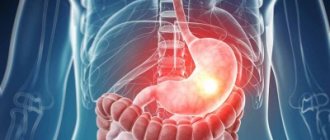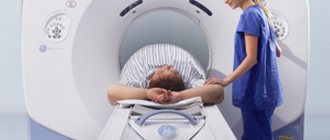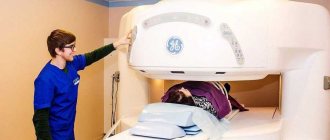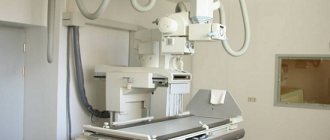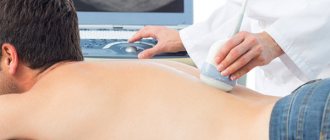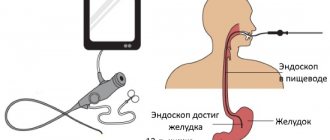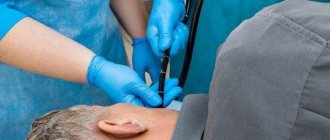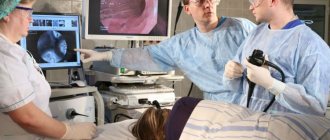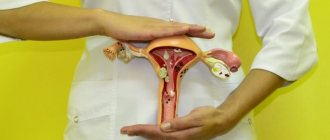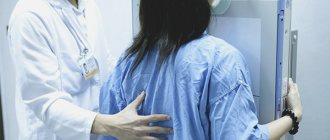Gastroscopy through the nose (FGDS or FGS, which stands for fibrogastroduodenoscopy or fibrogastroscopy, respectively) is a more gentle method of examining the stomach, since the probe is inserted through the nose, thereby not touching the root of the tongue; accordingly, the patient does not experience a gag reflex and other problems that may occur during the procedure. This method is mainly used for people with hypersensitivity who cannot swallow a special sensor.
The essence of the method
Gastroscopy, today, is the most informative diagnostic method, allowing not only to examine the mucous membrane of the upper gastrointestinal tract (GIT), but also to perform minor surgical procedures, in particular:
- removal of small benign neoplasms (polyps, papillomas);
- taking samples of the mucous membrane for histological analysis if malignant tissue degeneration is suspected;
- the use of high-frequency currents to cauterize injuries in order to prevent bleeding;
- suturing cracks and tears.
All this became possible thanks to the development of a fiber-optic system, which is the main structural element of the gastroscope. It is with the help of a bundle of the finest fibers that the image from the distal end of the gastroscope is transmitted to the monitor, allowing a variety of manipulations to be performed under visual control. As a rule, a gastroscope has a standard length of about 130 cm and a thickness ranging from 0.5–1.3 cm.
A significant design difference between gastroscopes is the location of the optical system; it comes in the following types:
- frontal;
- lateral;
- oblique.
The lateral position is used to examine the blind areas of the duodenum during esophagogastroduodenoscopy. However, due to the good flexibility and controllability of the distal end, in most cases gastroscopes with frontally located optics are used in practice.
Fiber gastroscope with frontal optics
The term gastroscopy includes two types of diagnostics:
- fibrogastroscopy (FGS), during which the esophagus and stomach are examined;
- esophagogastroduodenoscopy (EGDS) or fibroesophagogastroduodenoscopy (FEGDS), including the duodenum in the list of objects examined.
Performing gastroscopy using the classical method involves introducing an endoscopic system through the patient’s oropharynx into the esophagus. It is this part of the procedure that usually causes many difficulties that complicate the doctor’s work and frighten the patient. Transnasal gastroscopy allows you to avoid a number of difficulties associated with side effects that arise during the process of swallowing the probe.
Important! A limitation to transnasal gastroscopy may be a too narrow nasal passage or a deviated nasal septum, which does not allow insertion of a probe into the opening.
Contraindications
Despite all the advantages of transnasal gastroscopy, there are a number of conditions when its implementation is strictly prohibited. These include:
- tumors of the nasal cavity or nasopharynx;
- consequences of traumatic injury to the nose (for example, deviated nasal septum);
- infectious processes that are accompanied by swelling of the nasal mucosa ;
- frequent nosebleeds;
- traumatic brain injury;
- instability of the patient's general condition;
- condition after myocardial infarction, or unstable angina;
- blood clotting disorder (congenital or acquired);
- mental disorders with inadequate perception of medical procedures;
- bronchial asthma in the acute stage;
- disturbance of external respiration;
- acute phase of ischemic or hemorrhagic stroke;
- cardiac arrhythmias, which can threaten the patient’s life, without proper drug therapy or installation of an artificial pacemaker.
Advantages and disadvantages
The main advantage that allows transnasal gastroscopy to be positioned as less traumatic is the absence of the need to insert a probe through the pharynx. When performing gastroscopy according to the generally accepted method, the gastroscope comes into quite close contact with the root of the tongue and pharynx, causing vomiting spasms. In this case, the patient is in a reclining position, holding a plastic mouthpiece in his mouth to prevent accidental closure of the teeth.
Constant salivation and gagging cause a lot of inconvenience not only to the patient, but also to the doctor, since they make it difficult to insert a probe into the esophagus. It is extremely difficult for a patient in such a situation to make a swallowing movement so that the end of the gastroscope can pass the lower sphincter of the esophagus, which opens during swallowing.
Patient position during routine gastroscopy
Recently, gastroscopy, performed under anesthesia, has gained great popularity. However, even in this case, there are many limitations in which the use of general anesthesia or medicinal sleep is associated with certain risks:
- elderly age;
- cardiac ischemia;
- high or low blood pressure;
- pulmonary failure;
- recent heart attack or stroke.
Inserting a gastroscope through the nose allows you to avoid medicated sleep during the procedure, since the probe does not touch the base of the tongue, and therefore does not cause a gag reflex. The second factor that distinguishes transnasal gastroscopy from classical gastroscopy has both positive and negative sides. Due to the small width of the nasal passage, only a probe with a thickness of no more than 0.6 mm can be used during the procedure. This, undoubtedly, makes the procedure the least traumatic, however, in most cases it does not allow any manipulations other than examination, since ultra-thin gastroscopes often do not provide an instrumental channel for the introduction of surgical instruments.
In general, intranasal gastroscopy has the following advantages:
- almost complete absence of pain during and after the procedure;
- absence of strong anxiety in the patient;
- no need to resort to general anesthesia (anesthesia);
- the risk of damage to mucous surfaces and infection is significantly reduced;
- Side effects such as loss of voice, sore throat, and swelling of the throat are practically not observed.
A runny nose is not a contraindication to transnasal gastroscopy
Preparation
Gastroscopy of the stomach without swallowing the probe
Intranasal gastroscopy also requires adequate preparation for the procedure, just like those performed in the classical way, since its technical implementation does not have significant differences. The main goal of preparing for diagnosis is maximum cleansing of the stomach, which can be achieved by refusing to eat 8–10 hours before the procedure. Since gastroscopy is usually prescribed in the morning, the dinner the night before should be as light as possible and not contain chocolate or foods that stimulate the secretion of gastric juice:
- sour;
- spicy;
- pickled;
- smoked.
Approximately 1 hour before the procedure you should stop drinking. Pain relief with a local anesthetic is also an integral part of the preparation. To do this, the nasal cavity and throat are treated with Lidocaine.
Carrying out
During the diagnosis, the patient lies on his left side, and the doctor inserts the end of the probe into one of the nostrils. A small amount of a substance is first injected into the nasal cavity, designed to facilitate the sliding of the gastroscope. During administration, it is recommended to breathe through the mouth.
The patient may experience minor discomfort when bending the distal end of the probe to make turns. After overcoming the nasopharyngeal area, the unpleasant sensations completely disappear.
Superficial gastritis on a gastroscopic picture
To improve the quality of the transmitted image, the area being examined is inflated with air supplied through the gastroscope. At the same time, the folds of the stomach are straightened, allowing the condition of the mucous membrane to be examined in detail. The volume of supplied air must be strictly regulated, since excessive amounts can cause pain. In case of regurgitation of air, the patient's position should be changed, lowering the upper body a little lower.
Important! A medical couch intended for gastroscopy must have regulators that make it easy to raise or lower the patient lying on it, achieving a position that is optimally convenient for diagnosis.
Similarities
FGDS through the nose and through the mouth allows you to assess the condition of the gastrointestinal tract . In addition, endoscopic examinations make it possible to perform a biopsy, polypectomy and stop bleeding.
Visual methods allow the doctor to identify erosions, ulcerative changes, tumor processes, and also evaluate the effectiveness of the treatment.
Thus, the specialist can get a complete picture of the changes occurring in the gastrointestinal tract.
Consequences
Nasal gastroscopy is a fairly safe diagnostic procedure, practically eliminating all possible consequences that arise after conventional gastroscopy. However, there is a small risk of nosebleeds.
This is due to the intense blood supply to the nasal mucosa. Before the procedure, the patient must warn the doctor about taking medications that affect blood clotting. Due to the fact that sedatives or anesthesia are not used when performing endoscopy through the nose, the patient can return to normal life immediately after the procedure.
Carrying out transnasal gastroscopy
The modern rhythm of life leaves its mark on human health. Evidence of this is the increase in the number of diagnosed gastrointestinal pathologies, such as gastric and duodenal ulcers, chronic gastritis and gastroduodenitis. Oncological diseases are also not in last place. Gastroscopy, regardless of the technique, is the result of the development and improvement of diagnostic methods and makes it possible to identify all these diseases in the early stages, which significantly increases the effectiveness of treatment and increases the chances of a full recovery.
Indications for transnasal EGD
FGDS is one of the most commonly used diagnostic techniques in gastroenterology. It is prescribed if the patient has the following symptoms:
- aching or sharp cutting pain in the upper abdomen, which intensifies after breaking the diet, drinking alcoholic beverages, or pressing with fingers;
- a feeling of heaviness in the stomach and its rapid filling during meals;
- sudden loss of appetite;
- nausea and vomiting with blood , bile or more mucus;
- tendency to constipation or diarrhea;
- sensation in the chest or frequent heartburn;
- weight loss without changes in diet or physical activity;
- belching sour;
- the appearance of a white coating on the tongue or mucous membranes of the mouth;
- a sharp change in the patient’s taste preferences (the appearance of an aversion to meat).
In addition, for a number of conditions, transnasal gastroscopy is preferable or is the only possible choice. These include:
- acute inflammatory processes of the oral cavity;
- impaired swallowing (consequence of a stroke or tumor in the central nervous system);
- aneurysm (expansion or protrusion of the wall) of the thoracic aorta;
- narrowing of the esophagus;
- severe nausea during routine FGDS;
- increased anxiety and fear of the patient before the procedure.
